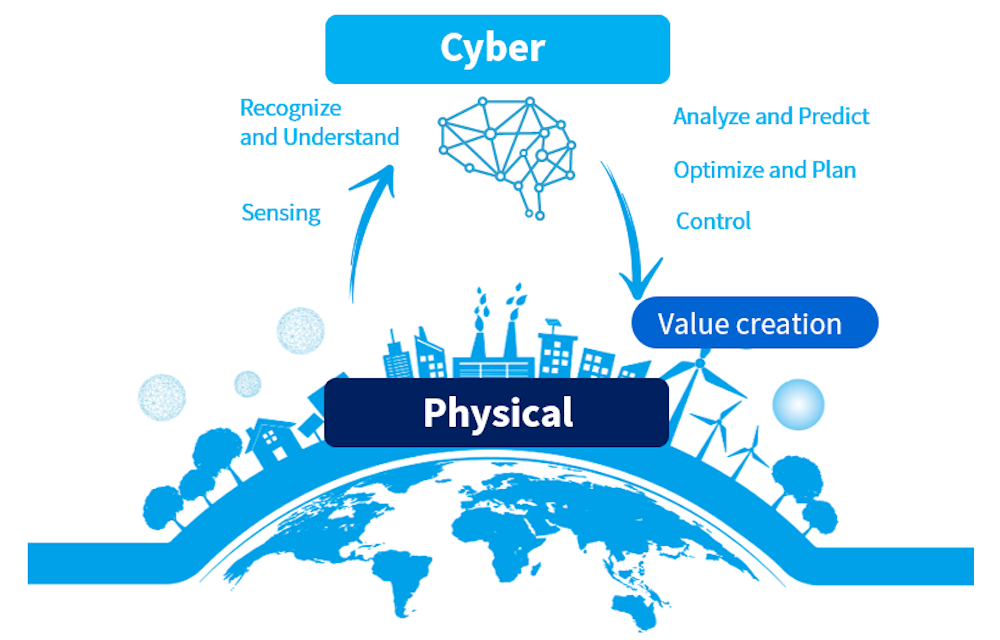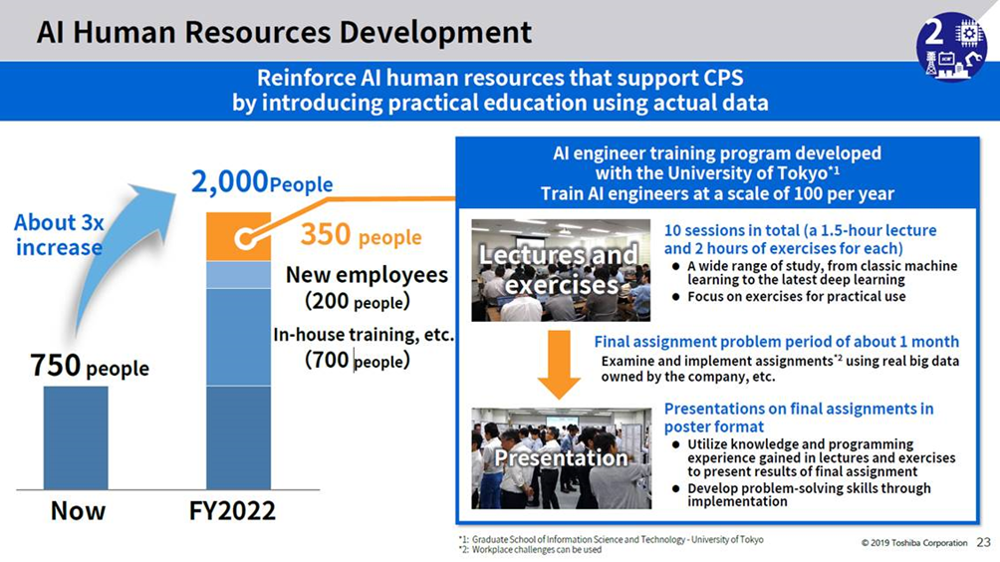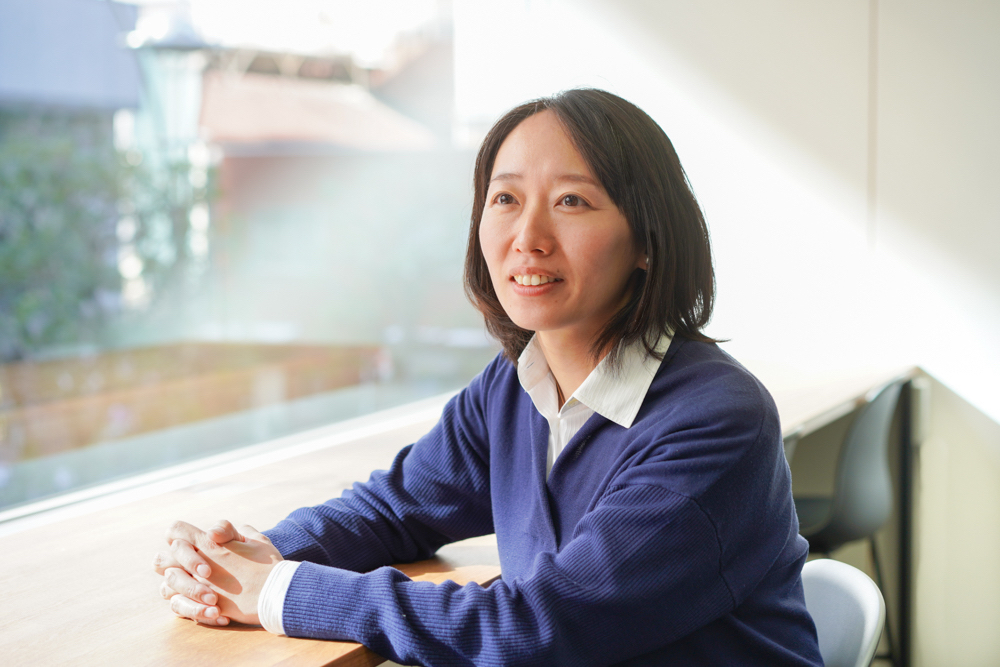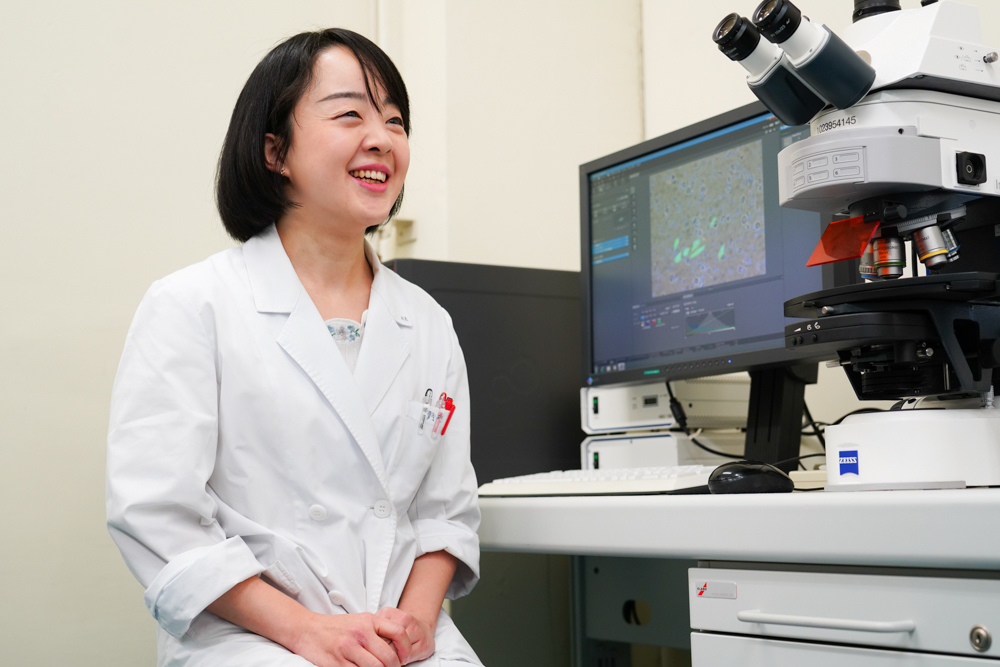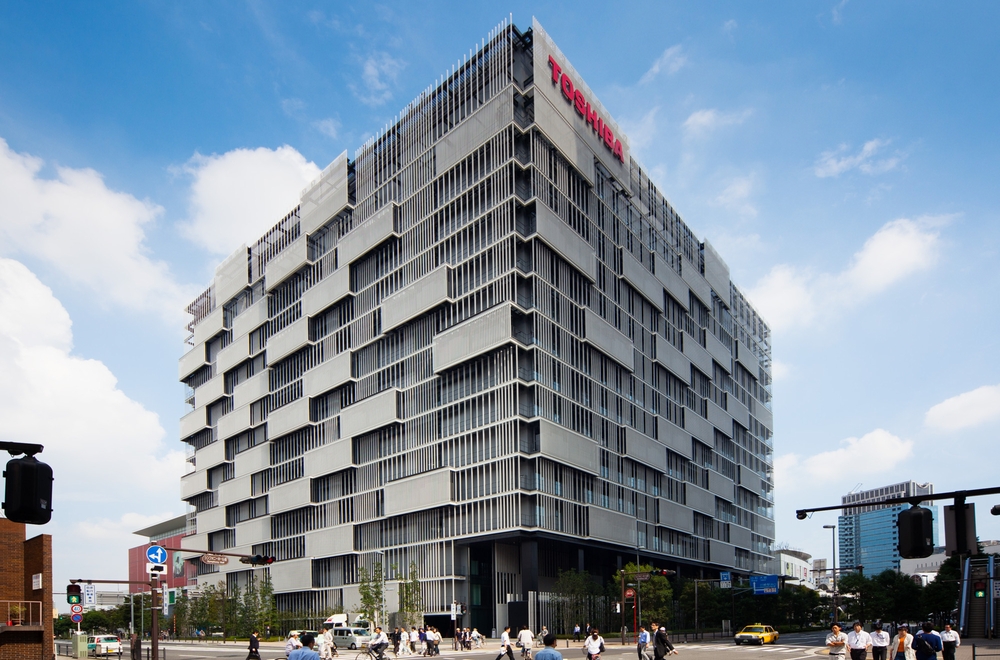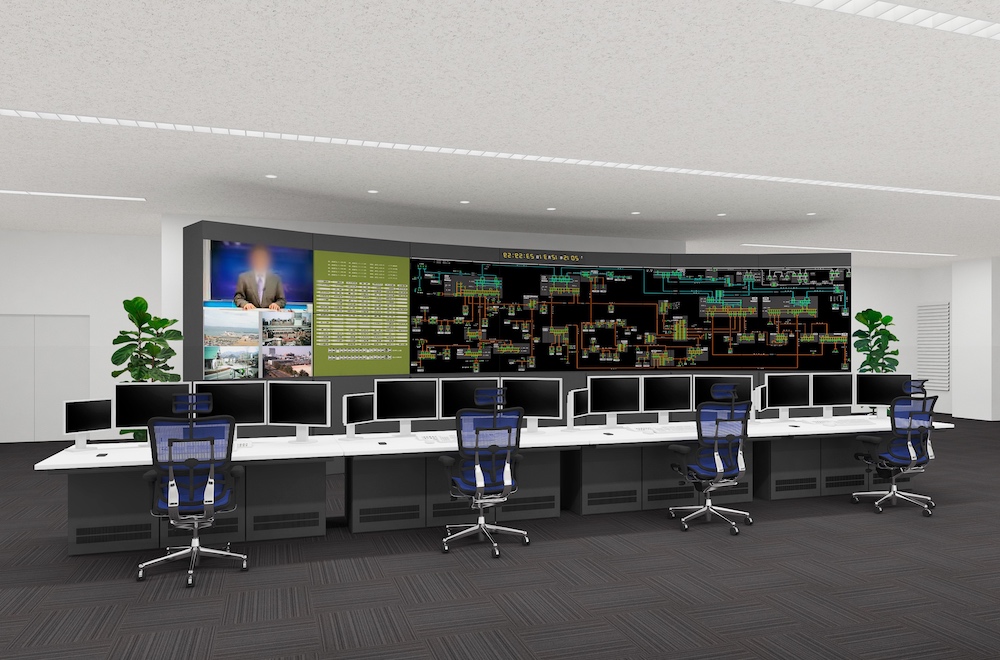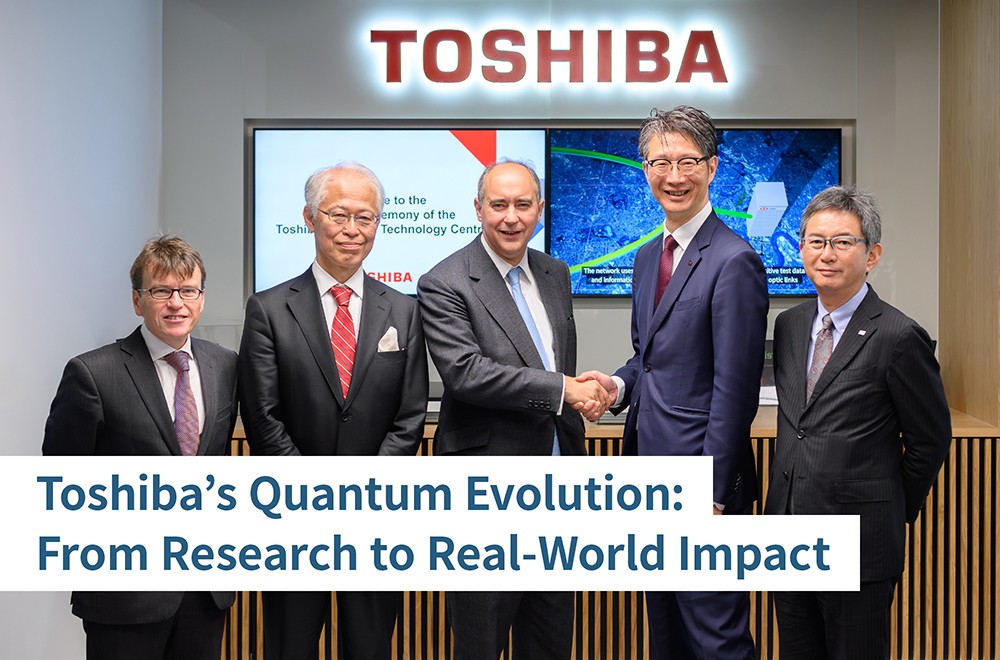Toshiba’s AI: Changing Businesses, Societies and Lives
2020/07/08 Toshiba Clip Team
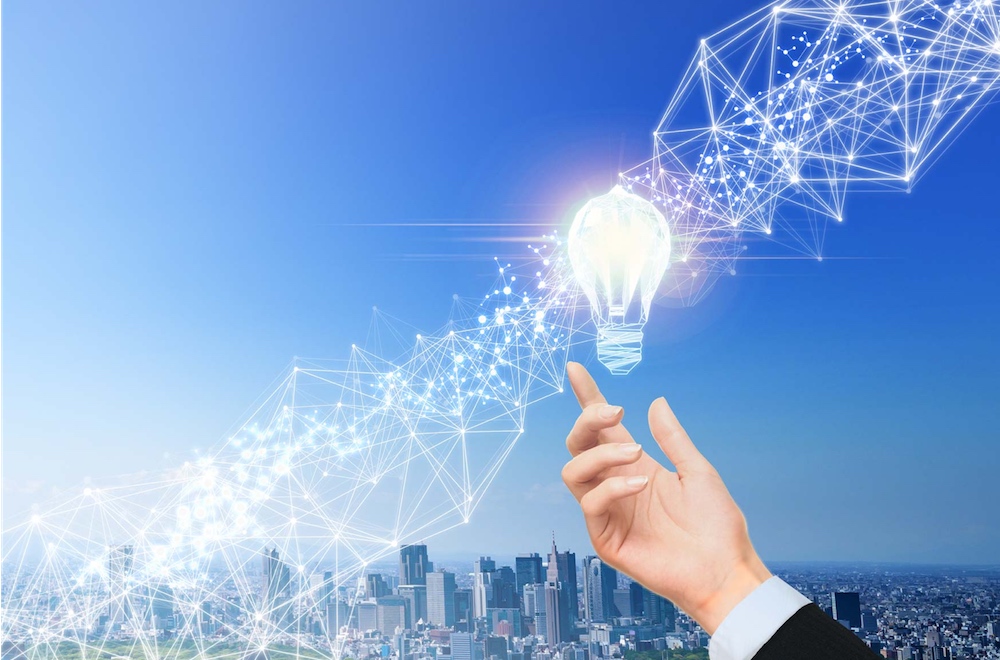
Artificial intelligence (AI) technologies are increasing in numbers and getting more advanced, and users upskill constantly to remain relevant. What’s more, they are everywhere, to a point where it is hard to think of a field without AI in the future. We are, it seems, now firmly in the age of AI.
Toshiba Corporation has entered into the AI arena since its early stage — starting with the development of the world’s first OCR (optical character recognition) postal code reading and sorting device in 1967 and in other areas including voice recognition, image recognition, speech synthesis, translation, chatbots and intent understanding. Toshiba is ranked #3 in the world and #1 in Japan1 in terms of cumulative number of AI-related patent applications, making us one of the leading global companies for this technology. And as we enter into this new age of AI, the company have been focusing on co-creation to develop deep research initiatives and site-oriented, problem-solving approaches to technological developments in AI.
So what are Toshiba’s views about the future of AI? We talked to Toshiba’s researchers and Hironobu Nishikori, Executive Officer & Corporate Senior Vice President, who heads Toshiba’s digital solutions business2.
1. “WIPO Technology Trends 2019,” published by the World Intellectual Property Organization (WIPO)
2. As of March 2020
Solving social issues with digital solutions
We are experiencing a new wave of global digitalization and transformation of industrial eco-systems along with increasingly complex social issues. For example, in Japan, there is a declining population and a growing ageing society, with estimates indicating that the country’s population will fall under 100 million with accompanying economic contractions and labor shortages expected by 20503. The local communities are pressurizing the government and corporations to address these social issues. In particular, attention is being paid to open innovation that transcends the boundaries of industries and borders, starting from digital technology.
3. Information and Communications in Japan (White Paper 2018)
“In Japan, we’re trying to solve these issues through various means, including growing the number of women in the workforce and employing foreigners. We’re also working to make work more efficient through digitalization, like the implementation of IoT and AI. However, there is an increasing challenge of hiring qualified talents for strong and sustainable growth.” says Hironobu Nishikori, Executive Officer & Corporate Senior Vice President2, who heads Toshiba’s digital solutions business.
Hironobu Nishikori, Executive Officer & Corporate Senior Vice President, Toshiba Corporation
“The 20 years since the start of the 21st century was dominated by the ICT (information communication technology) giants, GAFA4. They were the first to ride that ‘digital’ wave, and they grew as more businesses went digital. The focus today is moving towards the fusion between the cyber and the physical. To address increasingly complex social issues, we need move towards digital transformation. In other words, we need to take real-world data, analyze it in cyberspace, and use the results to create new value out here in the real world,” said Nishikori.
4. GAFA: U.S.-based ICT companies Google, Apple, Facebook, and Amazon
This, indeed, is Toshiba’s goal—to become a cyber-physical systems (CPS) company, one that is based around its CPS technologies. AI technology becomes absolutely integral to the realization of this CPS goal.
A CPS is a system in which you take real-world data, analyze it in cyberspace, then feed it back into the real world in the form of easily-digestible information and knowledge, to create new value
“At Toshiba, we have over 140 years’ worth of manufacturing experience, and over 50 years’ worth of AI research. The fact is that we’ve spent many years working in both the cyber and physical realms. With our experience working with physical things, and a long-standing customer base with whom we’ve built up trust, we have a competitive edge over digital-only companies. We can address various issues through CPS because we can analyze our customers’ data more deeply, and provide actionable insights,” said Nishikori.
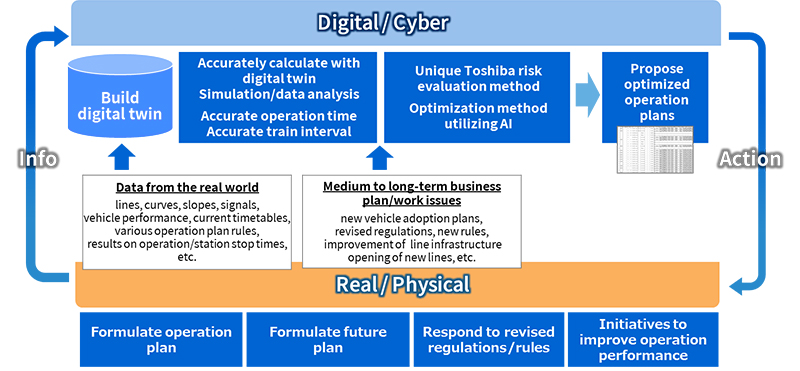
One of Toshiba’s Cyber Physical System (CPS) Technology project is the Digital Twin based Train Planning Project with United Kingdom train operator Greater Anglia, aiming to create a more robust timetable and improve customer convenience. We developed the Digital Twin, which faithfully and accurately reproduces a real-world train operation environment in cyberspace. Then we analyze and conduct simulations under various conditions.
Nishikori said, “It is difficult to conduct a variety of simulation types using an actual railway system. However, simulations on Digital Twin embedded with AI enable us to evaluate and reduce the risk of train delays. It will improve customer convenience and satisfaction, and lead to an improved overall operation efficiency for Greater Anglia.”
We are in an age of globalization and becoming increasingly borderless, along with this come more complex issues. To increase economic and social values and to make societies and countries more robust, companies must work to co-create. So says Nishikori.
“Many social issues can’t be solved by just one company. There is a growing interest in open innovation, a digitally-rooted form of innovation that transcends industry and national boundaries. It’s important that we all be on the same page from the start, making sure we all have a long-term perspective, and an idea as to the values that our innovation will be based on. There is also more demand for frameworks that start small but are scalable. Toshiba is adopting this approach and with our cyber-physical systems, to address these global issues,” said Nishikori.
The technologies that Toshiba has developed in the areas of voice/language and image will also be an advantage in terms of implementing AI in the real world. For example, Toshiba is currently developing an AI technology for edge devices like household appliances that can detect keywords and recognize individual speakers simultaneously, even when it’s not connected to an Internet network. This would allow even edge devices, with their limited processing power, to be able to distinguish between different voices, and engage automatically in actions that would suit that particular user.
In terms of image analysis, there’s also the joint research project between Toshiba Digital Solutions and Chiba University, which aims to develop an AI-based pathological diagnostic system for lymph node metastasis of stomach cancer. There’s also been an increasing focus, in critical areas like medicine and social infrastructure, on “explainable AI” that can provide explanations as to their reasoning, and support human decision-making.

This implementation of AI in society is something that Toshiba aims to accelerate in the future. As such, we will work to train more AI engineers, with the goal to have 2,000 engineers in the Group by fiscal year 2022.
“We have to train more AI engineers so that we can continue making these contributions to society as one of the world’s leading CPS technology companies,” said Nishikori.
The world needs AI engineers that… Aren’t AI engineers?
Toshiba has started an AI engineering training program in conjunction with the Graduate School of Information Science and Technology at the University of Tokyo. The program offers a comprehensive education on AI methodologies, from classical machine learning to the latest advancements in deep learning. It also gives trainees an opportunity to utilize Toshiba-owned real-world big data, and gain more practical skills in AI technologies.
Toshiba currently has over 700 AI engineers, but the goal is to triple this number. It’s not necessarily the number of AI engineers that matters, however. In the world of Toshiba, an AI engineer is not just someone who knows how to utilize AI technologies. They also have to know how to apply AI in Toshiba’s existing specialties in the physical realm, and carve open new areas of development using AI.
“I’m excited to see new innovations that’ll emerge from this collaboration between AI and Toshiba’s various technological specialties.” says Rei Kawakami, Project Assistant Professor at the Graduate School of Information Science and Technology at the University of Tokyo5, who teaches AI technology for this program.
5. As of March 2020
Rei Kawakami, Project Assistant Professor, Graduate School of Information Science and Technology, University of Tokyo
Kawakami has high expectation for this industry-academia project between Toshiba and the University of Tokyo— with the new applications of AI to industry, and the feedback they’ll be able to receive further in AI research.
“It’s so inspiring and motivating to be able to work with engineers at Toshiba—to the point where it’s even influenced the direction of my own research,” said Kawakami.
The effects of this program are already becoming apparent within Toshiba as well. The trial for the AI engineer training program was conducted in 2019.
Emi Nozaki, who participated in the program from the Toshiba R&D Center, said, “The AI technology I studied in the program with the University of Tokyo has really given me a step up in terms of my research. My specialty is biology, but the program gave me the tools to incorporate materials informatics (MI) in my work.”
With MI, researchers can utilize information science methodologies to search for new materials and reagents in more efficient ways.
Emi Nozaki, Frontier Research Laboratory, R&D Center, R&D Division, Toshiba Corporation
“My research involves finding ways to get cancer cells to ‘light up,’ and part of that involves carrying out many experiments to test several thousand combinations for the reagents we use. But with AI, we’re hoping we can use Bayesian optimization, for example, to narrow down the field from several thousand to the most promising combinations,” said Nozaki.
Nozaki has great hopes for the utilization of AI in her field. She says, however, that as a biology specialist, there were things at the start of the AI engineer training program that she found very difficult.
“This wasn’t an introductory program designed to train non-engineers and we really had to be serious about studying or we’d be left behind in a heartbeat. But that’s also what made it so worth doing. And through this program, I was able to learn about cutting-edge AI technologies and where those are headed in the future,” said Nozaki.
After completing the program, Nozaki returned to her lab and noticed that AI engineers and biologists interpret numbers differently. “I observed that AI engineers and biologists are able to see that there were different ways of understanding these numbers, and this made me confident that we could further our collaboration, make it even more meaningful than before,” said Nozaki.
Nishikori says that this synergy amongst engineers is exactly what he wants to see, and something he has great hopes for.
“We can’t just get complacent because we have all these different areas of expertise and technologies. We want to give younger engineers more opportunities to get involved in work outside the company. It’s important that they’re inspired and motivated by the new technologies they see. It’d be great if these engineers could go beyond their areas of specialty and develop a broader view, be more flexible,” said Nishikori.
Toshiba, with its over 140-year history as a manufacturer, is pretty much everywhere—in the healthcare systems that support our health, in our day-to-day lives—and so are our AI systems. What these more advanced AI systems will do is level us up even further in all of these fields—a super-charged potion, if you will, powered by technological optimization and engineer synergy. We’re looking forward to seeing what it can do.
![]()
Related Links
*This section contains links to websites operated by companies and organizations other than Toshiba Corporation.
Greater Anglia turns to Toshiba’s AI solutions to enhance train timetabling and improve customer convenience | News | TOSHIBA DIGITAL SOLUTIONS CORPORATION

東芝AI技術カタログ | 東芝
Toshiba Digital Solutions and Chiba University’s Center for Frontier Medical Engineering Begin Joint Research on Lymph Node Metastasis Detection for Stomach Cancer Using AI | News | TOSHIBA DIGITAL SOLUTIONS CORPORATION

News Release (7 Nov, 2019): Toshiba Set to Triple AI Engineers with Training Program Developed with | News | Toshiba






